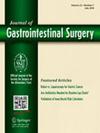腹股沟疝修补术围手术期阿片类处方填充物的全国趋势(2010-2021):一项队列研究。
IF 2.2
3区 医学
Q3 GASTROENTEROLOGY & HEPATOLOGY
引用次数: 0
摘要
背景:围手术期阿片类药物处方是新阿片类药物暴露的重要来源。立法努力限制阿片类药物处方的有效性仍然未知,特别是在普通外科手术后。方法:我们使用MarketScan商业索赔和遭遇以及医疗保险补充数据库进行了一项队列研究。我们纳入了在2010年1月至2021年12月期间接受门诊腹股沟疝修补术的未使用阿片类药物的成年受益人。我们研究了微创和开放性疝修补患者术前和术后阿片类药物处方填充的频率和平均吗啡毫克当量(MMEs)的趋势,以及新的持续阿片类药物使用(NPOU)的发生率。我们使用治疗加权逆概率(IPTW)来控制混淆和加权广义模型来评估两种手术入路之间阿片类药物处方填充的趋势和NPOU的发生率。结果:纳入188377例患者,中位年龄52岁,男性占92.9%。术前阿片类药物处方填充率从2010年的7.9%下降到2021年的5.4% (p < 0.0001),术后阿片类药物处方填充率从75.7%下降到72.3% (p = 0.14)。在研究期间,每份处方吗啡毫克当量(MMEs)中位数增加(p < 0.0001)。NPOU的发生率为1.0%。结论:尽管术前阿片类药物处方填充频率减少,但围手术期阿片类药物处方填充的平均尺寸增加。这些发现强调了加强阿片类药物管理计划和教育举措的必要性,以尽量减少腹股沟疝修复后阿片类药物的处方。本文章由计算机程序翻译,如有差异,请以英文原文为准。
National trends in perioperative opioid prescription fills for inguinal hernia repair (2010-2021): a cohort study
Background
Perioperative opioid prescriptions are a crucial source of new opioid exposure. The effectiveness of legislative efforts to limit opioid prescribing remains unknown, especially after general surgery procedures.
Methods
This was a cohort study that used the MarketScan Commercial Claims and Encounters and Medicare Supplemental Databases. The study included adult beneficiaries without opioid use in the previous year who underwent ambulatory inguinal hernia repair between January 2010 and December 2021. This study examined trends in frequency and average morphine milligram equivalents (MMEs) of preoperative and postoperative opioid prescription fills among patients who underwent minimally invasive hernia repair and open hernia repair and the incidence of new persistent opioid use (NPOU). In addition, this study used the inverse probability of treatment weighting to control for confounding and weighted generalized models to assess the trends of opioid prescription fills between the 2 surgical approaches and incidence of NPOU.
Results
The study included 188,377 patients, with a median age of 52 years. Of note, 92.9% of the included patients were male. Preoperative opioid prescription fills decreased from 7.9% in 2010 to 5.4% in 2021 (P <.0001), whereas postoperative opioid prescription fills decreased from 75.7% to 72.3% (P =.14). The median MMEs per prescription fill increased over the study period (P <.0001). The incidence of NPOU was 1.0%.
Conclusion
Despite reductions in the frequency of preoperative opioid prescription fills, the average size of perioperative opioid prescription fills increased. Our findings underscore the need for enhanced opioid stewardship programs and educational initiatives to minimize opioid prescribing after inguinal hernia repair.
求助全文
通过发布文献求助,成功后即可免费获取论文全文。
去求助
来源期刊
CiteScore
5.50
自引率
3.10%
发文量
319
审稿时长
2 months
期刊介绍:
The Journal of Gastrointestinal Surgery is a scholarly, peer-reviewed journal that updates the surgeon on the latest developments in gastrointestinal surgery. The journal includes original articles on surgery of the digestive tract; gastrointestinal images; "How I Do It" articles, subject reviews, book reports, editorial columns, the SSAT Presidential Address, articles by a guest orator, symposia, letters, results of conferences and more. This is the official publication of the Society for Surgery of the Alimentary Tract. The journal functions as an outstanding forum for continuing education in surgery and diseases of the gastrointestinal tract.

 求助内容:
求助内容: 应助结果提醒方式:
应助结果提醒方式:


